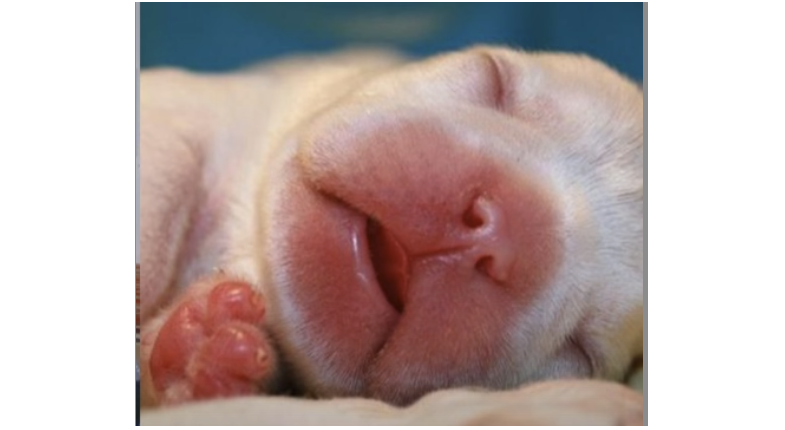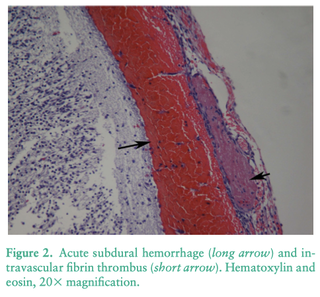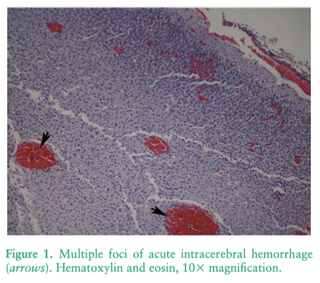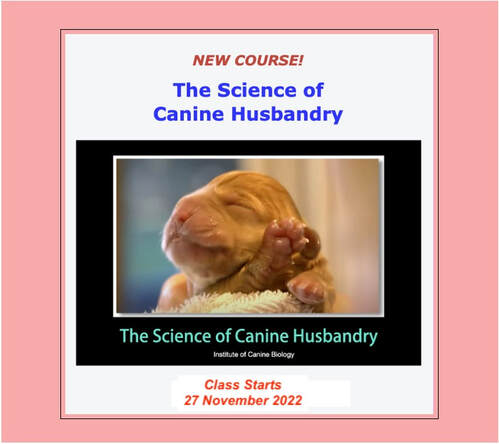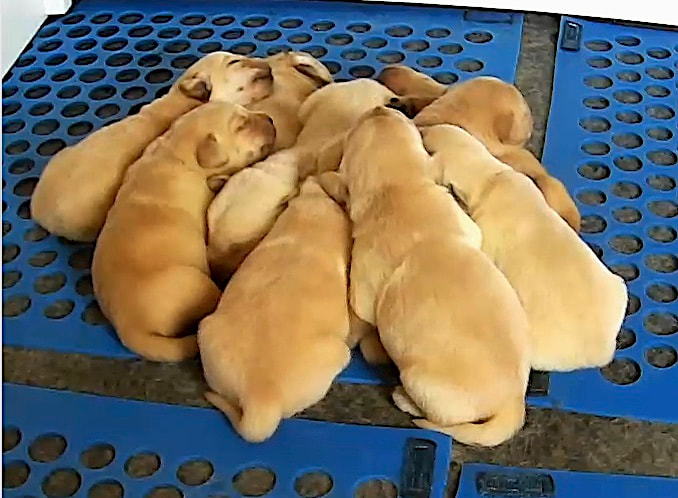| In a perfect world, every puppy would be fully mature, with all systems go, at the moment of birth. But as many of you know, the reality can be very different. Dogs have surprisingly high neonatal mortality. It varies considerably from litter to litter, but the average frequency of stillborn puppies that are fully mature with no evident defects is variously estimated as 5-30%. Some of these puppies respond to resuscitation efforts by the breeder; in fact, puppies are fairly tolerant of short periods without respiration or a heartbeat. |
But swinging puppies to clear the airways is a really, really bad idea.
I have to confess that the first time I saw this done, it literally took my breath away (not a pun). Swinging might move the fluid out of the lungs, but it causes ALL of the fluids in the body to move towards the head of the puppy - blood, cerebrospinal fluids, stomach contents, and any other fluids in the body. This is NOT a good thing, and I will explain why.
Your body does a good job of regulating your blood pressure by changing the diameter of blood vessels (constrict or dilate) and increasing or decreasing the heart rate to keep blood pressure from going too high or too low. If you have ever stood up quickly and started to black out, this is your body momentarily failing to maintain the blood pressure in your head; in just a second or two, everything will return to normal as your body automatically adjusts blood pressure and heart rate to restore adequate oxygen delivery to your brain.
The systems to control blood pressure and tissue perfusion in the dog are essentially the same as your own, but they are not fully functional in the newborn puppy. A puppy is more like a premature human infant at birth, with organs systems and regulation not yet fully developed. Because of this, insults that would be handled easily by an adult dog can be much more challenging to the newborn puppy. Control of blood pressure is one of these.
This is a real problem if the puppy is swung in an arc to remove fluid from the lungs. Watch this fellow (a veterinarian, apparently) demonstrate.
Raise your hand if you gasped when you watched this. Or maybe you even stopped breathing. Think about that astronaut in the centrifuge. Try to imagine what would be happening inside the body of a tiny puppy. That puppy is being swung HARD.
Yes, swinging might help remove fluid from the lungs of a newborn puppy. But it can also cause brain damage.
The puppy might have no obvious signs of physical trauma; there are no surface lesions and few behavioral changes (after all, the puppies only have two activities, nurse and sleep). There can be seizures, which might be the only significant outward evidence of serious damage (Grundy et al 2009). However, examination of the brain tissues will reveal evidence of trauma manifested as subdural and intracerebral hemorrhage.
Always remember that a puppy is like a premature infant, not a tiny adult, and it has very limited physiological reactions in response to the stresses that are handled easily by the adult dog.
Learn more about the science of dog breeding in ICB's new online course
"The Science of Canine Husbandry"
Grundy SA, 2009. Clinically relevant physiology of the neonate. Vet. Clin. Small Anim. 36: 443-459.
Grundy et al 2009. Intracranial trauma in a dog due to being "swung" at birth. Topics in companion animal medicine 24: 100-103.
ICB's online courses
***************************************
Visit our Facebook Groups
ICB Institute of Canine Biology
...the latest canine news and research
ICB Breeding for the Future
...the science of animal breeding
